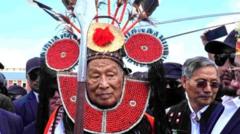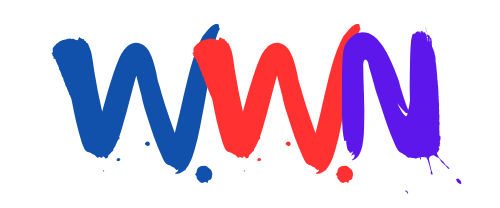What Indian Village Welcomed One of the World's Oldest Rebels Home?

Published: 2025-10-28 04:00:27 | Category: world
Thuingaleng Muivah, the 91-year-old leader of the National Socialist Council of Nagalim (Isak-Muivah), returned to his village in Manipur last week after decades of exile, igniting both hope and controversy in the ongoing struggle for Naga sovereignty. His presence has reignited discussions about the demand for a separate state for the Naga people, a movement that has faced significant challenges over the years.
Last updated: 29 September 2023 (BST)
What’s happening now
Thuingaleng Muivah's recent return to Ukhrul in Manipur marks a significant moment in the Naga political landscape. The event attracted a large crowd, showcasing local support for Muivah and the Naga cause. However, it also raises questions about the future of the Naga movement, particularly as the NSCN (I-M) faces internal divisions and diminished clout. As discussions about greater autonomy and Naga identity resurface, the implications of Muivah's visit extend beyond mere sentimentality, potentially reshaping the political dialogue in the region.
Key takeaways
- Thuingaleng Muivah, the leader of NSCN (I-M), returned to his home village in Manipur after decades of exile.
- His visit has reignited the debate over Naga sovereignty and the demand for a separate state.
- The NSCN (I-M) has lost influence over the years, with younger Nagas seeking peace over armed struggle.
Timeline: how we got here
The Naga struggle for sovereignty is rooted deeply in history. Here are some key milestones:
- 1918: Formation of the Naga Club by World War One labourers to assert Naga identity.
- 1947: Naga leaders refuse to join India, declaring independence through a plebiscite in 1951.
- 1955: Intensification of armed conflict as Indian troops are deployed to quell insurgency.
- 1997: Ceasefire declared between NSCN (I-M) and the Indian government.
- 2015: Framework Agreement is signed, seen as a step towards resolving the conflict.
- 2023: Muivah returns to Somdal village after a long absence, amidst a backdrop of political complexity.
What’s new vs what’s known
New today/this week
Muivah's return has amplified calls for a renewed focus on Naga identity and rights. His presence at home has prompted discussions about the NSCN (I-M)'s goals and the future of the Naga movement. The events have also reignited interest in the historical grievances of the Naga people, who have long sought recognition from the Indian state.
What was already established
The Naga conflict has been ongoing since before India's independence, marked by a series of uprisings, peace talks, and factional splits within the Naga movement. The NSCN (I-M) has historically sought either full sovereignty or a "Greater Nagaland," and Muivah has been at the forefront of these demands for decades.
Impact for the UK
Consumers and households
While the events in Manipur may not directly affect UK consumers, they highlight broader issues of self-determination and ethnic conflict that resonate globally. The ongoing struggles of minority groups, like the Naga people, can influence international relations and humanitarian efforts.
Businesses and jobs
The instability in the region could impact local businesses, particularly in sectors reliant on peace and stability for trade. As the NSCN (I-M) has historically maintained a parallel government, any escalation of tensions could disrupt local economies.
Policy and regulation
The UK government may monitor the situation as part of its foreign policy agenda, particularly in relation to human rights and self-determination. Changes in the Naga political landscape could prompt discussions about international support for peace initiatives.
Numbers that matter
- 600+ rounds of talks held between the NSCN (I-M) and the Indian government since the late 1990s.
- 50+ years of armed conflict since the Naga Club's formation in 1918.
- 1 unrecognised plebiscite for Naga independence held in 1951.
Definitions and jargon buster
- NSCN (I-M): National Socialist Council of Nagalim (Isak-Muivah), a prominent Naga insurgent faction seeking sovereignty.
- Greater Nagaland: A proposed state that would unify Naga populations across regional borders.
How to think about the next steps
Near term (0–4 weeks)
The immediate impact of Muivah's return will likely be felt in local sentiment and discussions about Naga identity. Observers should monitor reactions from both the Indian government and the NSCN (I-M).
Medium term (1–6 months)
As the dynamics evolve, there may be renewed calls for negotiations or a fresh impetus for peace talks. The engagement of younger Naga leaders will be crucial in shaping the future direction of the movement.
Signals to watch
- Statements from the Indian government regarding autonomy for Nagas.
- Reactions from other Naga factions regarding Muivah's return and the NSCN (I-M).
- Local and regional elections that may influence the political landscape.
Practical guidance
Do
- Stay informed about developments in the Naga conflict and regional politics.
- Support initiatives that promote dialogue and peacekeeping in conflict areas.
Don’t
- Assume that Muivah's return will lead to immediate change; watch for evolving dynamics.
- Disregard the historical context of the Naga struggle; understanding the past is crucial for the future.
Checklist
- Keep an eye on news from Manipur and the Naga regions.
- Engage with content that discusses ethnic and regional conflicts globally.
- Consider the implications of sovereignty movements in your studies or work.
Risks, caveats, and uncertainties
The situation remains fluid, with potential for both conflict escalation and resolution. While Muivah's return is a symbolic moment, the underlying issues of sovereignty and identity are complex and fraught with historical grievances. Some factions may oppose any perceived concessions to the Indian state, which could lead to further unrest.
Bottom line
Thuingaleng Muivah's return to his village is a poignant reminder of the deep-rooted Naga struggle for identity and self-determination. As the NSCN (I-M) navigates a challenging political landscape, the future of the Naga movement remains uncertain, with new generations seeking peace and stability over armed conflict.
FAQs
What is the significance of Muivah's return to Manipur?
Muivah's return is significant as it reignites discussions about Naga sovereignty and identity, highlighting the ongoing struggles of the Naga people.
What does the NSCN (I-M) aim to achieve?
The NSCN (I-M) seeks either full sovereignty for the Naga people or the creation of a "Greater Nagaland" that unites Nagas across regional borders.
How has the Naga conflict evolved over the years?
The Naga conflict has evolved through numerous rounds of negotiations, factional splits, and changing public sentiment, leading to a complex political landscape today.



